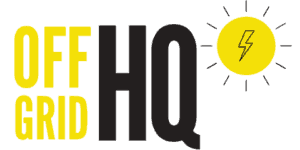Have you ever found yourself pondering about solar inverters? Like, what they are, and why you even need one?
Well, that’s a great place to start.
Solar inverters are crucial components of solar power systems. They convert direct current (DC) produced by your solar panels into alternating current (AC), which is used to power your home.
Let’s dive into the intriguing world of solar inverters to get a better understanding of their importance and function in solar power systems.
A solar inverter is a critical piece of technology in any solar power system. Its primary role is to convert the DC electricity generated by solar panels into AC electricity, the kind of power most homes and appliances use.
Picture this: Your solar panels sit under the sun, soaking up its rays. The sun’s energy stimulates the solar cells, creating a flow of electrons.
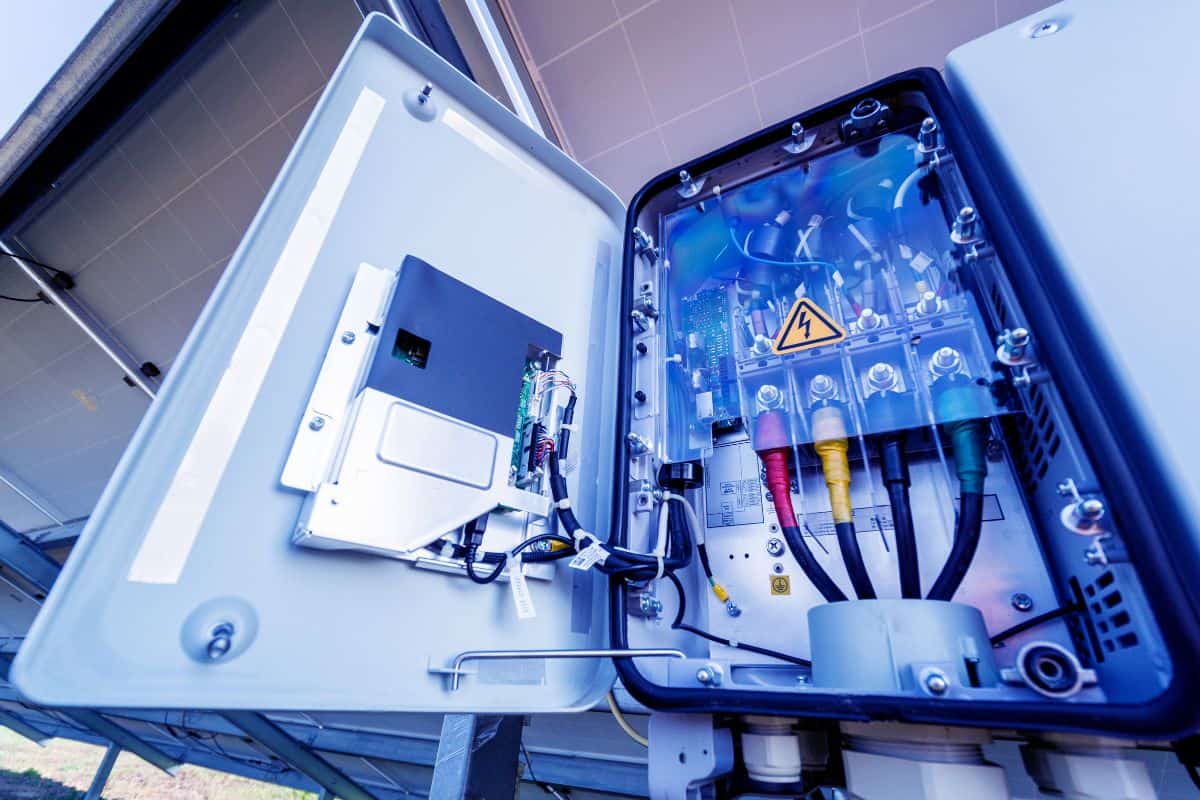
This flow results in DC electricity. But there’s a problem. Most of your household appliances can’t use DC electricity. They’re designed to operate on AC electricity. That’s where our friend, the solar inverter, comes in.
The solar inverter works as the translator between your solar panels and your home. It takes the DC electricity from the panels and converts it into AC electricity.
Your solar inverter is also a regulator
But it doesn’t stop there. The inverter also regulates the voltage to ensure it’s safe for home use. And if your system is grid-tied, the inverter synchronizes the power it generates with the grid’s voltage and frequency.
It’s like the conductor of an orchestra, ensuring all elements are harmonizing beautifully.
There are three primary types of solar inverters – string inverters, microinverters, and power optimizers. Each one has its unique strengths and is suited to different types of solar installations.
String inverters are often used for larger systems, while microinverters and power optimizers are perfect for more complicated installations or those with shading issues.
And why do you need a solar inverter?
Simply put, without an inverter, the power your solar panels generate would be useless. Your solar system would be like a car without an engine, or a lamp without a lightbulb. The inverter is the key that unlocks the potential of your solar panels, turning their power into something your home can use.
The lifespan of a solar inverter is typically between 10 to 15 years, after which it may need to be replaced. Some newer models promise even more longevity.
Regular maintenance can ensure that your inverter stays in top shape, so it’s wise to monitor your system and schedule check-ups with a professional.
So, the next time you see a rooftop array of gleaming solar panels, remember: it’s the humble solar inverter working tirelessly behind the scenes that makes all the difference. And it’s this brilliant piece of technology that lets the sun power everything from your morning coffee to your late-night TV binging sessions.
When it comes to solar power, understanding the importance of the solar inverter puts you a step ahead in the journey towards sustainable living. It’s this marvel of technology that takes us a step closer to a greener, cleaner world, one converted current at a time.
No that we know the basics about solar inverters, let’s dive into more detail…
What Is A Solar Inverter: The Heart of Your Solar Energy System REVEALED
Ever heard the phrase, “It’s what’s on the inside that counts?” Well, when it comes to solar power systems, it rings true. Let’s unwrap the mystery and learn about the heart of these systems, the solar inverter.
A solar inverter is essentially the bridge between two worlds. On one side, you have the solar panels absorbing sunlight and producing direct current (DC) electricity. On the other side, you have your home, longing for the alternating current (AC) electricity it needs to power everything from your refrigerator to your phone charger.
Picture this: the solar panels are like an apple tree bearing fruit, while the solar inverter is the kitchen gadget that turns those apples into a tasty pie that your family can enjoy.
Without the solar inverter, the apples would go to waste, just as the DC electricity would be unusable.
There are primarily three types of solar inverters you might come across: string inverters, microinverters, and power optimizers.
String inverters are the most common and cost-effective option for standard installations, with all your panels connected in a ‘string’ or series.
However, if one panel underperforms (due to shade, dirt, etc.), it affects the output of the entire string.
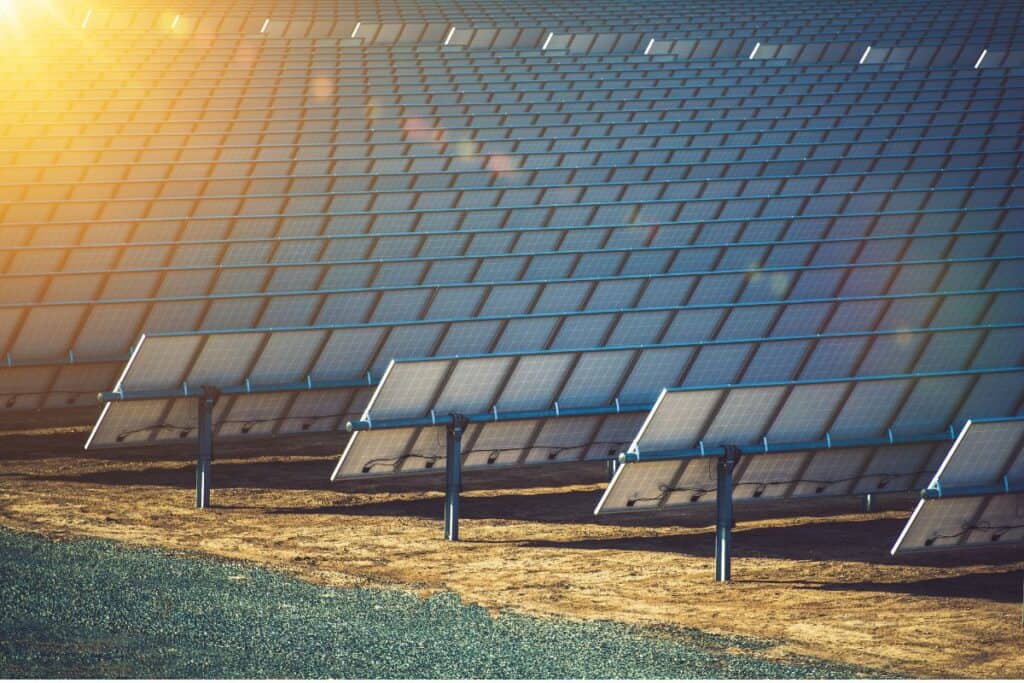
On the other hand, microinverters and power optimizers, collectively referred to as Module-Level Power Electronics (MLPEs), offer a solution to the weakness of string inverters.
Each solar panel is equipped with its own inverter or optimizer, allowing each to operate independently. So, even if one panel is underperforming, the others are not affected.
This feature makes MLPEs an excellent choice for installations with potential shading issues or complex roof layouts.
Communicating with the grid
Another function of solar inverters, particularly in grid-tied systems, is to communicate with the grid. They ensure the solar power generated matches the grid’s voltage and frequency.
And in case of a power outage, grid-tied inverters are designed to shut down immediately for safety – a feature known as anti-islanding.
In essence, the solar inverter is the workhorse of your solar power system.
It works silently behind the scenes, making sure that the power from the sun is transformed into something your home can utilize. It’s a piece of technology that has a significant impact on the performance and efficiency of your solar power system. Now that’s something to appreciate next time you flip a switch!
Why Solar Inverters are Essential: Making Solar Power Work for Your Home
So, we’ve established what a solar inverter is, but you might still be wondering, “Why exactly do I need one?” Let’s delve into the reason why solar inverters are a non-negotiable component of your solar panel system.
Imagine going to a foreign country without a translator or a language guide. You might see beautiful sights, experience new things, but you’d struggle to interact with locals or understand the culture fully.
In the context of a solar energy system, your solar panels are the foreign country, and the solar inverter is your invaluable translator.
The reason why you need a solar inverter is simple: your solar panels and your home speak different ‘electrical languages.’ Solar panels produce DC electricity when they absorb sunlight. However, most homes and appliances operate on AC electricity. Without an inverter to ‘translate’ the DC electricity into AC electricity, the power generated by your solar panels would be largely unusable.
But a solar inverter’s job doesn’t stop at translation. It also performs quality control. It ensures the electricity provided to your appliances has the correct voltage and current.
For grid-tied systems, it harmonizes your solar power with the grid’s electricity, ensuring the two can work in tandem seamlessly.
What’s more, solar inverters are essential for the safety of your solar system. If there’s a power outage, grid-tied inverters immediately shut off.
This feature, known as anti-islanding, is vital to protect utility workers who might be fixing the power lines and prevent any electrical mishaps.
Managing your solar inverter
In the case of systems using microinverters or power optimizers, the inverter also allows for better system management and performance monitoring. Each panel operates independently, so if one isn’t performing up to par, it doesn’t drag the rest down with it. And with some systems, you can even monitor your system’s performance in real-time, right from your smartphone.
So, why do you need a solar inverter? Because without it, the solar power generated by your panels would be like a radio broadcast that your home can’t tune into. The solar inverter tunes your home into the right frequency, ensuring that every bit of solar energy is put to good use. It’s the indispensable heart of your solar power system, working diligently behind the scenes to keep your home powered by the sun.
Digging Deeper: How Does a Solar Inverter Work?
You know that solar inverters are essential and what they do, but you might still be wondering, “How do they do it?” Let’s break down the process and understand how a solar inverter works its magic.
The working of a solar inverter can be broken down into three primary stages: DC to AC conversion, voltage regulation, and synchronization with the grid. Let’s take these one at a time.
The first step is the DC to AC conversion. When sunlight hits your solar panels, they produce DC electricity. This form of electricity has electrons flowing in one direction only, similar to water flowing in a river. However, your home’s appliances need AC electricity, where electrons change direction like tides in the sea.
The solar inverter steps in to transform the DC electricity from your solar panels into AC electricity your home can use.
Next is voltage regulation. The AC electricity produced still needs a bit of tweaking before it’s ready for use. It’s like baking a cake – you’ve mixed all your ingredients, but you still need to bake it at the right temperature. The inverter ensures that the electricity produced is at the right voltage and current for your appliances.
In the case of grid-tied systems, the inverter’s third task is to synchronize the solar power with the grid’s electricity. It’s like matching the rhythm of two songs so that they can play harmoniously. The inverter matches the frequency and phase of your solar power with the grid, allowing them to work together seamlessly.
Safety features of solar inverters
For safety, grid-tied inverters also have an anti-islanding feature. This means if there’s a power outage, the inverter will automatically shut off the solar system to prevent backfeeding the grid.
This is crucial to protect utility workers who may be fixing the power lines.
In systems equipped with microinverters or power optimizers, each solar panel operates independently, enhancing the overall efficiency of the system.
If one panel is underperforming, it doesn’t affect the rest. Plus, you can often monitor the performance of your system in real-time.
So, how does a solar inverter work? In essence, it acts as the brains behind the operation, controlling the flow of electricity from the panels to your home.
It’s the technology that makes solar power practical, usable, and safe. Like a seasoned conductor leading an orchestra, the solar inverter ensures that every part of your solar system works in harmony.
Let’s now look at the different types of solar inverters in more detail and how do they differ.
Solar Inverter Types: A Guide to Making the Right Choice
Have you ever wondered why there are different types of solar inverters? Let’s delve into this topic and understand the various types of solar inverters and what sets them apart.
At the heart of the matter, there are primarily three types of solar inverters: string inverters, microinverters, and power optimizers. Each comes with its own set of strengths, making them suitable for different solar installation needs.
First, let’s discuss string inverters. They are the most common type used in solar installations, particularly for larger, uncomplicated systems.
Your solar panels are linked together in a ‘string,’ and the combined DC electricity from all these panels is fed into a single string inverter.
This inverter then transforms the combined DC electricity into AC electricity. Think of it as a central hub doing all the conversion work. However, one downside is that if one panel underperforms due to shading or malfunction, it can reduce the output of the entire string.
Next, we have microinverters. As the name suggests, these are smaller inverters that are attached to each solar panel. Instead of a central hub, each panel has its own inverter doing the DC to AC conversion right on the spot.
This allows each panel to operate independently, so if one panel is underperforming, the others are not affected. Microinverters are perfect for installations where shading issues or complex roof layouts are present.
Finally, there are power optimizers. They’re a sort of middle ground between string inverters and microinverters.
Like microinverters, power optimizers are attached to each panel. They ‘optimize’ the DC electricity from each panel before sending it to a central inverter for conversion into AC.
This means that, like microinverters, power optimizers allow each panel to work independently, enhancing system efficiency.
What is the difference between these solar converters?
So, what’s the difference between these types of solar inverters? Essentially, it boils down to where the DC to AC conversion and optimization takes place: at a central location (string inverters) or at each panel (microinverters and power optimizers).
The choice between them depends on your specific installation and performance needs.
Understanding the different types of solar inverters and their benefits helps you make an informed choice about the best fit for your solar system.
Whether it’s the cost-effectiveness of string inverters, the individual optimization of microinverters, or the balanced approach of power optimizers, there’s a solar inverter out there that’s just right for you.
Choosing the Right Solar Inverter: A Path to Optimal Solar Performance
So, now that we’ve explored the different types of solar inverters, you might be wondering, “Which solar inverter is right for me?” Selecting the right solar inverter is crucial for optimizing the performance of your solar system. Let’s guide you through the process.
Choosing the right solar inverter depends on several factors, including the size of your solar system, potential shading issues, your roof’s layout, and your budget.
If you have a larger, straightforward solar installation with no shading issues and a simple roof layout, a string inverter might be your best bet.
They are the most cost-effective option and are suitable for standard installations. However, remember that with string inverters, if one panel underperforms, it can affect the entire string’s output.
On the other hand, if your installation is prone to shading, or you have a complex roof layout with panels facing different directions, microinverters or power optimizers (collectively known as Module-Level Power Electronics or MLPEs) may be a better fit.
These types of inverters are attached to each solar panel, allowing each one to operate independently.
This means even if one panel is underperforming due to shading or any other reason, it doesn’t affect the performance of the rest.
Although MLPEs tend to be more expensive, they can boost the efficiency of your solar system, especially in less-than-ideal conditions.
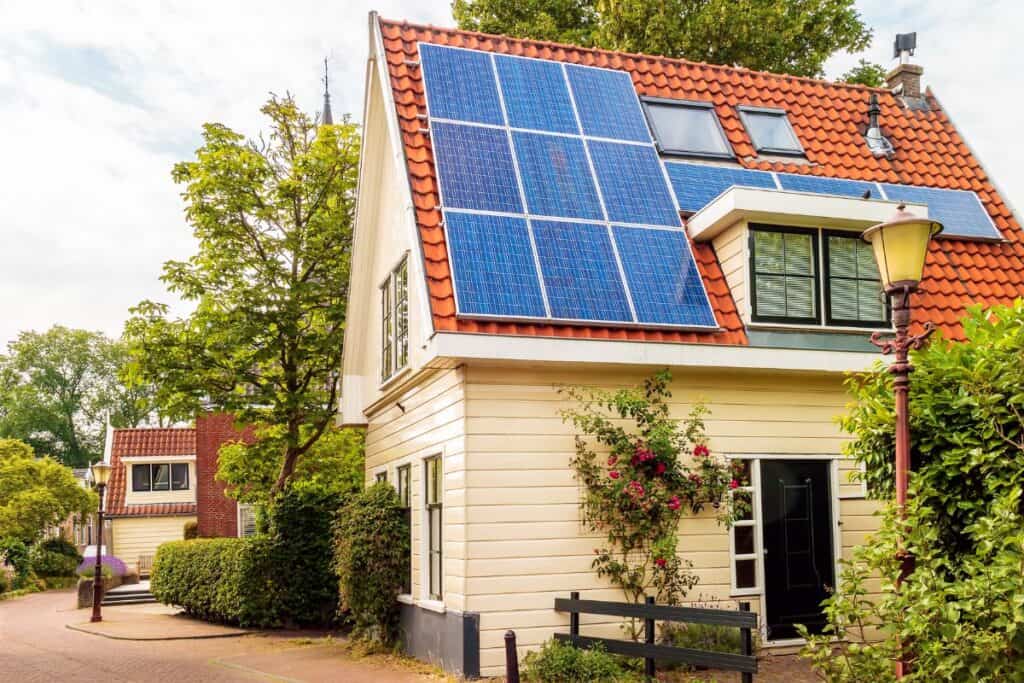
Looking at solar inverter compatibility
Another consideration is the solar inverter’s compatibility with your solar panels and the rest of your system. It’s vital to ensure the inverter you choose is compatible with your solar panels in terms of capacity and voltage.
You can consult with a solar installation professional to ensure you’re making the right choice.
Also, consider the inverter’s warranty. Solar inverters typically have a lifespan of 10 to 15 years and might need to be replaced at least once during the solar system’s lifetime.
A good warranty can offer peace of mind and protect your investment.
Finally, consider the inverter’s features and your specific needs. Some inverters come with advanced monitoring features that allow you to track your system’s performance in real-time, right from your smartphone.
If you’re a tech-savvy homeowner who likes to stay on top of things, this might be a valuable feature for you.
In conclusion, choosing the right solar inverter comes down to understanding your needs and the unique aspects of your solar installation.
It’s about finding a balance between cost, efficiency, and functionality. Remember, an informed decision is the best decision when it comes to your solar journey.
The lifespan of a Solar Inverter: Knowing When it’s Time for a Change
Solar panels often steal the limelight when it comes to the lifespan of solar power systems. But what about the equally important solar inverter? Let’s explore the typical lifespan of a solar inverter and the signs that it might be time for a replacement.
Typically, a solar inverter can last between 10 to 15 years. That’s a decent lifespan, but compared to the 25 to 30-year lifespan of solar panels, it’s evident that your solar inverter might need replacement at least once during the lifetime of your solar system.
But how do you know when it’s time to replace your solar inverter? There are a few tell-tale signs that it might be time for a change.
First, keep an eye on your energy production. If you notice a significant drop in your solar system’s output and you’ve ruled out other potential issues like shading or dirt on your panels, it could be a sign that your inverter is not performing optimally.
This is where inverters with monitoring features can be quite handy, allowing you to keep track of your system’s performance and spot any irregularities quickly.
Second, check for any visible damage or warning lights on your inverter. If your inverter is showing error messages, it might be time for a replacement.
Similarly, physical damage like cracks or corrosion could also signal that your inverter needs to be replaced.
Finally, if your inverter’s warranty has expired, you might want to consider replacing it. An expired warranty could mean potential repair or replacement costs down the line.
Let he warranty guide you
Replacing your inverter when the warranty expires can be a proactive step to ensure the continued optimal performance of your solar system.
However, keep in mind that the lifespan of your inverter can be influenced by factors like the quality of the inverter, the conditions it operates in, and how well it’s been maintained.
High-quality inverters operating in favorable conditions and properly maintained can exceed their expected lifespan.
In conclusion, while your solar inverter may not last as long as your solar panels, being aware of its expected lifespan and knowing the signs of when it might be time for a replacement can help ensure that your solar system continues to perform optimally.
After all, a solar power system is only as strong as its weakest link.
Connecting the Dots: How a Solar Inverter Links to the Grid
You’ve learned what a solar inverter is, why it’s essential, and how it works. But how exactly does this crucial device connect to your home’s electrical grid? Let’s demystify the process of how a solar inverter links to the grid.
The process of connecting a solar inverter to the grid, also known as grid-tie or on-grid setup, involves a few steps and components. It’s essential to understand that this process should be carried out by a qualified professional, given the risks associated with working with electrical systems.
First, your solar panels generate DC electricity when they absorb sunlight.
This DC electricity is then fed into your solar inverter, which converts it into AC electricity, the form of power most homes and appliances use.
Once the DC electricity has been converted to AC electricity, it’s then ready to be fed into your home’s electrical system.
But before it can be used or sent to the grid, it needs to pass through your home’s electrical panel, also known as a breaker box or distribution board.
The electrical panel ensures that the converted electricity is distributed correctly to different circuits within your home.
If your solar system produces more power than your home needs, the excess power can be sent back to the grid. To do this, the AC electricity passes through a utility meter before it reaches the grid.
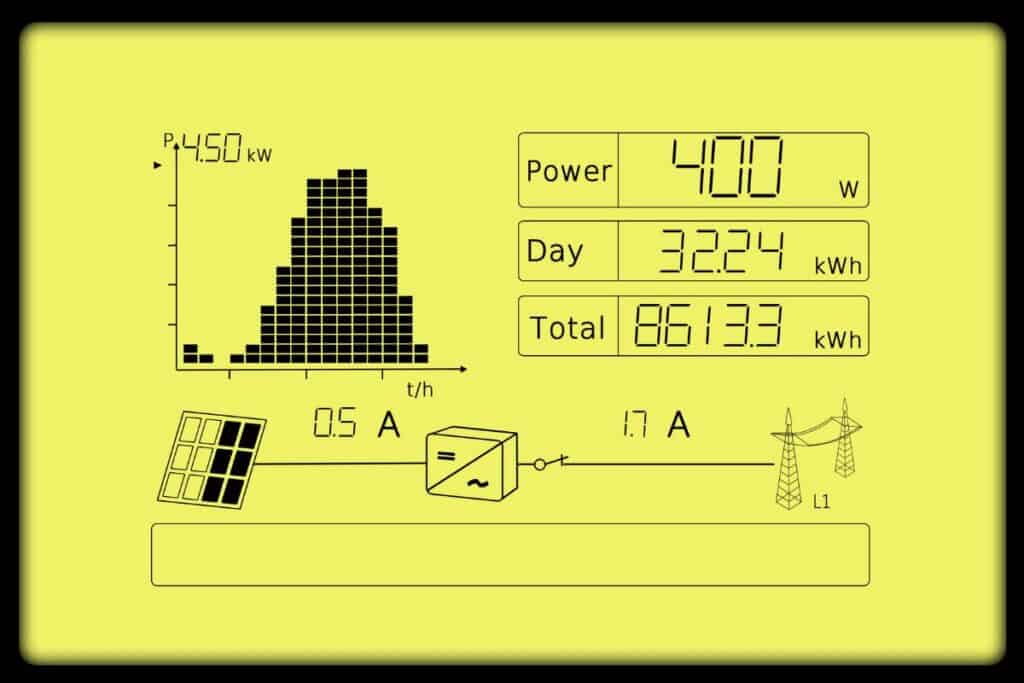
Selling your excess solar power
This meter measures the amount of electricity your solar system sends back to the grid. In many areas, you can receive credits for this excess electricity through a process called net metering, effectively reducing your utility bill.
One important safety feature to mention is the inverter’s anti-islanding capability. In the event of a power outage, your solar inverter will automatically disconnect from the grid.
This prevents electricity from feeding back into the grid when it’s down, which could pose a danger to utility workers repairing the lines.
In summary, the connection of a solar inverter to the grid involves transforming the DC electricity generated by your solar panels into AC electricity, distributing it through your home’s electrical panel, and, in some cases, sending excess power back to the grid via your utility meter.
It’s a marvel of modern technology that makes harnessing the power of the sun a practical reality for homes around the world.
The Cost Factor: Understanding the Price of a Solar Inverter
When considering the shift to solar power, one of the most significant considerations is cost. The solar inverter, being a key component of the system, contributes to the total cost. But how much does a solar inverter cost, and does it make your solar system more expensive? Let’s delve into this subject.
The cost of a solar inverter varies widely depending on the type, capacity, brand, and features. A string inverter, typically used for larger, straightforward solar installations, can cost between $1,000 to $2,000. On the other hand, microinverters and power optimizers, which are attached to each individual solar panel, can cost significantly more, often between $2,000 to $3,000 or more for an average-sized system.
However, these costs can fluctuate depending on the specifics of your installation and the region in which you live.
Now, does the inverter make your solar system more expensive? The simple answer is yes, the cost of the solar inverter is a part of the total cost of your solar power system.
It’s like buying a car – the cost of the engine is part of the total cost of the car. However, it’s important to remember that the inverter is a crucial part of your solar system.
Without it, the electricity produced by your solar panels would be unusable in your home.
That being said, the cost of the solar inverter should be viewed as an investment rather than an expense. It’s an integral part of your system’s overall performance and can affect your system’s efficiency and the amount of electricity you can produce and use.
In other words, the right inverter can save you money over time by maximizing your system’s output.
Solar inverters are becoming cheaper
Moreover, the prices of solar inverters and overall solar systems have been steadily decreasing over the years, thanks to advancements in technology and growing market competition.
In many cases, the financial savings from your reduced electricity bill, coupled with incentives like solar tax credits and net metering, can offset the cost of your solar inverter and other system components over time.
In conclusion, while a solar inverter does add to the cost of your solar system, it’s a crucial component that helps to maximize the efficiency of your system.
When choosing a solar inverter, it’s vital to consider not only the upfront cost but also the potential long-term benefits and savings. After all, sometimes, the value is in the investment.
No Inverter, No Power? The Role of a Solar Inverter in Your Solar System
You might be wondering, “Can I still use my solar panel system without a solar inverter?” Technically, your solar panels can generate electricity without an inverter, but there’s a catch. Let’s delve into the nuances of what happens when you try to use a solar system without a solar inverter.
Solar panels produce electricity in the form of direct current (DC). It’s the same type of electricity that powers many of your small electronic devices, like your smartphone or laptop when they’re running on battery power.
So, in theory, if you have a device that runs on DC power and can handle the voltage your solar panels produce, you could use your solar panels without an inverter. But here’s where things get tricky.
Most homes and appliances use alternating current (AC), not DC. Why? AC electricity is more efficient to transmit over long distances, which is why the power grid uses it.
Moreover, AC electricity is safer to use in homes as it’s less likely to cause electric shocks. This is where the inverter comes into play, converting the DC electricity from your solar panels into AC electricity that your home can use.
The crux of not having a solar inverter
Without an inverter, you won’t be able to use the electricity generated by your solar panels to power most of the appliances in your home.
You also won’t be able to feed any excess electricity back to the grid (if your system is grid-tied) as the grid accepts only AC electricity.
Moreover, even if you were to run DC appliances directly from your solar panels, you’d still need some sort of charge controller to regulate the voltage and prevent damage to your appliances. This, combined with the limited range of DC appliances available and their typically higher cost compared to AC appliances, makes it impractical to run a solar system without an inverter in most cases.
In conclusion, while it’s technically possible to use a solar panel system without a solar inverter, it’s not practical for most home solar installations. The solar inverter plays a crucial role in making the electricity generated by your solar panels usable for your home, making it an indispensable part of your solar system.
The Key to Longevity: Maintaining Your Solar Inverter
Having invested in a solar inverter, you’ll undoubtedly want to keep it functioning optimally for as long as possible.
So how do you maintain a solar inverter, and are there any specific steps to extend its life? Let’s unveil the secrets to solar inverter maintenance and longevity.
To keep your solar inverter in top shape, regular inspection and maintenance are vital. However, remember that it’s always best to consult with a professional or your installer before performing any maintenance tasks, as dealing with electrical equipment can be risky if you’re not properly trained.
Firstly, it’s a good idea to visually inspect your inverter regularly for any visible signs of wear and tear, like cracks or discoloration. Regularly check for error messages or warning lights on the inverter’s display as well.
Secondly, keep the area around the inverter clean and free of debris. Ensure that the inverter’s cooling system isn’t blocked, as overheating can significantly reduce its lifespan. If your inverter is installed outdoors, make sure it’s well-protected from the elements, and check for signs of weather damage or animal activity.
Thirdly, it’s essential to monitor the performance of your solar inverter. Many modern inverters come with remote monitoring features that allow you to track the inverter’s performance in real-time. If you notice a significant drop in performance or any irregularities, it might be time to consult with a professional.
Proper installation is key
Regarding specific steps to extend the life of your solar inverter, one of the most crucial factors is proper installation. A professionally installed inverter, located in a well-ventilated area and away from harsh weather conditions, will likely last longer than one that’s not.
Lastly, consider a maintenance or service agreement with your installer or another professional service provider. They can perform regular inspections, identify and fix issues before they become more severe, and ensure that your inverter is running at peak efficiency.
In conclusion, maintaining a solar inverter mostly involves regular checks, keeping it clean and cool, and keeping an eye on its performance.
By taking these steps, you can ensure that your inverter, and thus your entire solar system, runs smoothly for many years to come. As always, the longevity of your inverter is ultimately an investment in the longevity of your solar journey.
